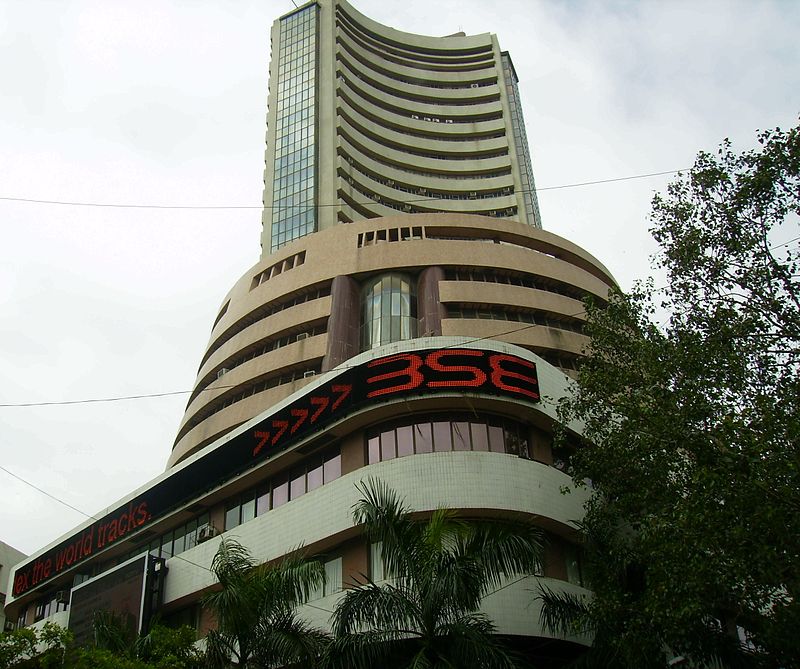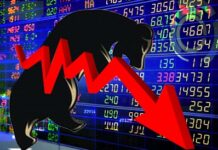New Delhi– India’s annual retail inflation eased to 5.18 percent in February from 5.69 percent in the month before even as the 12-month wholesale inflation was in the negative for the 16th straight month, official data showed on Monday.
Accordingly, the industry felt it was time the central bank cut interest rates.
 As per data on Wholesale Price Index (WPI) released by the Commerce and Industry Ministry, the annual inflation stood at (-)0.91 percent for February against (-)0.90 percent in the previous month, but was higher than the (-)2.17 percent level in the like month of the previous year. But the annual price increase of pulses at both wholesale and retail levels was over 38 percent.
As per data on Wholesale Price Index (WPI) released by the Commerce and Industry Ministry, the annual inflation stood at (-)0.91 percent for February against (-)0.90 percent in the previous month, but was higher than the (-)2.17 percent level in the like month of the previous year. But the annual price increase of pulses at both wholesale and retail levels was over 38 percent.
Also, the annual wholesale inflation for food articles was higher than the overall level at 3.35 percent for the month, even as pulses were costlier by 38.84 percent over the past year. At the retail level, against the food inflation of 5.30 percent, pulses were dearer by 38.30 percent.
The annual wholesale inflation in fuels also continued to decline, thanks to (-)7.7 percent drop in the prices of diesel and (-)1.03 percent decline in that for petrol. At the retail level, data for which was released by the Central Statistics Office, the fuel index was up 4.59 percent.
The 12-month wholesale inflation for manufactured goods was in the negative at (-)0.58 percent.
The fresh set of statistics comes at a time when the country’s factory output declined again in January, by (-)1.53 percent, dipping further from the (-)1.18 percent fall logged in December. The negative show was for the third straight month.
With inflation at both the wholesale and retail levels under check and the government adhering to its fiscal deficit targets, industry has raised its pitch for the central bank to cut rates and loosen its monetary, ahead of the policy update on April 5.
“The union budget for 2016-17, announced last month, has given due focus on boosting demand and encouraging domestic value addition. We have also seen that the fiscal framework will be adhered to by the government,” Ficci said in a statement.
“Given this, we firmly believe that the Reserve Bank of India should supplement efforts of the government to strengthen demand and continue with its accommodative stance in the forthcoming monetary policy,” Ficci president Harshavardhan Neotia said.
“A further cut in the policy rate at this juncture and its transmission by the banks in the form of lower lending rates would benefit both companies and consumers alike and impart some momentum to the still weak investment and consumption cycle.”
What has left the industry further worried is: At the use-based classification of six industries, the index for capital goods was down as much as 20.4 percent in January, while that for consumer non-durables was down 3.1. Consumer goods sub-index remained unchanged.
“The Index of Industrial Production (IIP) numbers released last week reported negative growth for the third consecutive month in January and highlight that signs of pick up in the manufacturing sector remain elusive,” Neotia added.
“The manufacturing sector has continued to remain in the red for the last three months with both capital goods and consumer non-durables showing a decline in growth,” said Chandrajit Banerjee, director general of the Confederation of Indian Industry.
“At this juncture when the growth momentum is below expectations and the government has committed to stay the course of fiscal consolidation, CII is hopeful the RBI would work in sync with the government for building a resilient growth trajectory by initiating monetary easing measures to complement the supportive fiscal initiatives announced in the Budget.”
A further look at the consumer price index data shows that the annual inflation rate has not been uniform. At the urban level, it was 4.30 percent, while at the rural level it was 5.97 percent. The food inflation was 4.23 percent and 5.96 percent respectively in the two areas.
Among the states, the retail inflation was as low as 2.70 percent in Uttarakhand and 3.01 percent in Jammu and Kashmir. On the flip side, it was as high as 8.04 percent in Odisha and 8.03 percent in Andhra Pradesh.
In the national capital, the annual retail inflation was 4.89 percent.





